new posts in all blogs
Viewing: Blog Posts Tagged with: Author Interviews, Most Recent at Top [Help]
Results 1 - 25 of 902
How to use this Page
You are viewing the most recent posts tagged with the words: Author Interviews in the JacketFlap blog reader. What is a tag? Think of a tag as a keyword or category label. Tags can both help you find posts on JacketFlap.com as well as provide an easy way for you to "remember" and classify posts for later recall. Try adding a tag yourself by clicking "Add a tag" below a post's header. Scroll down through the list of Recent Posts in the left column and click on a post title that sounds interesting. You can view all posts from a specific blog by clicking the Blog name in the right column, or you can click a 'More Posts from this Blog' link in any individual post.
 Last time I blogged it was related to dancing dinosaurs. And guess what? My post today is about dancing dinosaurs, too! Canadian author and dancer Judy Cook is here with me to answer some questions about her debut picture book When Dinosaurs Go Dancing, recently published by FriesenPress and a great blend of rhythm, rhyme, dance, and science!
Last time I blogged it was related to dancing dinosaurs. And guess what? My post today is about dancing dinosaurs, too! Canadian author and dancer Judy Cook is here with me to answer some questions about her debut picture book When Dinosaurs Go Dancing, recently published by FriesenPress and a great blend of rhythm, rhyme, dance, and science!
Thanks for joining us, Judy! I'd love to hear more about your background in dance. When did your passion for dance begin and where has it taken you professionally?
I started dancing when I was a child at Sonia’s Dancing Academy in Saskatoon. I seemed to have a special talent for tap dancing, and after receiving a trophy for “the most outstanding tap performer” at a dance festival, I was hooked. A little praise goes a long way!
I kept taking jazz, tap, and ballet classes and even helped my teacher Sonia Fabian in teaching little kids. When I finished high school, I decided to continue my studies at the dance college at Ryerson University in Toronto. I had found my path in life!
I was so happy in Toronto because I had found a group of people who loved dance as much as I did. I was dancing from morning until night. I would even come to the campus on the weekends for extra ballet classes. After graduating, I auditioned for stage shows and began dancing professionally on TV and in shows around the Toronto area.
I was in a show at the Skyline Hotel for a year and then decided to go to Winnipeg when I was accepted for an apprentice position with
Winnipeg's Contemporary Dancers. I danced with them as an apprentice for a year and then started a theatre company “Canadian Content Theatre” with some theatrical friends of mine.
We travelled and performed all around Canada with that company for over 15 years.
That’s when we created our show “Listen to the Bones.” It was a musical theatre show all about dinosaurs and was initially in collaboration with a touring Dinosaur Alive exhibit that was at the Manitoba Children’s Museum for a summer.
What an interesting path that led you to dancing, theatre...and eventually dinosaurs! How did you come up with the idea for When Dinosaurs Go Dancing?
The book title is from a song in our “Listen to the Bones”
musical.
There is a dance I still do with the kindergarten-grade 2 students.
I have been doing this dance for years in the schools, and the students have always loved it.
I kept thinking that somebody should write a book based on this song, but when I realized that I was probably the only person who would ever do it.....I started jotting down ideas for the book.
It’s always fun to learn more about debut authors and their paths to publication. What was yours like? Did it happen quickly or was it a long road?
It was a long road for me…..12 years. I didn’t know how a person went about publishing a book. I was talking to an old school chum from Saskatoon about my idea. His kids had loved our dinosaur song “Listen to the Bones” when they were growing up. He took out a cheque book and made out a cheque to me for $5,000! He laughingly said that if I make a million I can pay him back some day. So that’s how I got the money to pay an illustrator, and that’s how I met Sonia Nadeau, who is now a dear friend of mine! I also went to a publishing workshop at Humber College in Toronto, so I went into the project with wide-open eyes, realizing that it was very difficult to sell a lot books, and even to make back your money, especially if you are trying to do it yourself.
Because you chose to self-publish your book through FriesenPress, you needed to find an illustrator on your own, as you have alluded to. How did you find Sonia Nadeau?
Yes….after I got the money I looked around for an illustrator from Winnipeg, and when I saw Sonia’s work I immediately knew she was perfect for the book project.
For most traditionally published picture books, the authors and illustrators don’t interact much during the publication process. What was your relationship with Sonia Nadeau like as the book was coming together?
Because I was used to collaborating with other artists in all the previous creative work I had done and because I was so close to the dinosaur material for so-o-o many years, I just knew I needed a more hands-on approach with the illustrator. Sonia was also close to the material because she had a job in a day care and just by chance had been using our music with the kids in her classes for six years!
I went to her day care….we recorded the kids dancing to the music, and she used the video for some of the inspiration for her drawings.
I also knew I wanted the dinosaurs to be taken from scientific renditions, and Sonia has a friend who draws dinosaurs for encyclopedias, so every dinosaur in the book was drawn that way!
We share a particular sense of humour, and we had lots of meetings and were on the same page from the start.
She is a delight to work with and I hope we can do it again soon!
I read in your bio at the back of When Dinosaurs Go Dancing that you conduct workshops in schools through several different arts programs. Can you tell us more about those workshops?
I have created a theatrical dance program for schools in which the students and I choreograph together and all the classes perform for each other at the end of the week. I work with some students who have extensive dance backgrounds mixed with some others who have none.
It’s my challenge to help create and guide the students to show off everybody’s talents.
That’s where my theatre training comes in handy. If somebody in the class has a special talent, we just choreograph it into our piece. My objective is for everyone to have a positive experience with the art form of dance! I was also the dance specialist for a two-year research project creating a dance program focusing on children with fetal alcohol syndrome in the Norway House Cree Nation, and was part of a panel to share the research at a world arts festival (
VSA) held in Washington, DC. I have had very positive experiences creating dance programs for children with disabilities.
How do you incorporate the book into your workshops for children?
I have just started to do readings in schools, and I have taken parts from the musical and adapted them to do fun scenes with the kids. The kids become newsboys in a scene that’s set to music and based on when people first began to discover dinosaur fossils.
There is also a hand dance "Back in Time” set to a music soundscape. I can use the same music with the kids for creative transformations….We theatrically change from being the wind…..to becoming a fish…..to flying like a pteranodon. It’s all great for workshop material. The kids can work together and make different dinosaurs out of their bodies while learning to be cooperative and work together as a group.
My partner Rubin Kantorovich and I recently co-wrote a new song called the "Bruce Rap." It’s all about the mosasaur I mention in my book. When I was doing a school workshop, I gave a verse to each group of four-to-six kids to work on, and they learned the words and choreographed cool moves to go along with it. Then they performed it for another class! They LOVED that activity!
The fossil skeleton of the mosasaur is on display at the Canadian Fossil Discovery Centre in Morden, Manitoba. FriesenPress's printing press is located in Altona -- a town close to the fossil museum.
They printed 2,000 copies of the book for a big giveaway at the Altona Sunflower Festival this year.
It was so fun to be able to give books away and not have to worry about making my money back.
That was a fun event AND they gave me 250 free paperback copies that I can sell!
Sonia and I also had a book launch at the fossil museum. I did the dance with the kids, Sonia gave an illustration workshop along with the reading, and we premiered the “Bruce Rap" song.
What great ways to promote the book! Through all of these activities, have you found any parts of the book that resonate the most with children and their caregivers?
I think the younger children enjoy the rhyme in the first part of the book and their older brothers and sisters like the dinosaur and fossil facts in the second part. They all love Sonia’s beautiful illustrations, and the dancers connect to all the dance-related parts.
What other book projects might you have in the works? Any more dancing dinosaurs on the horizon?
I would love to do another book with Sonia. I’d like to do a teacher’s guide, too. Right now I’m working on trying to find ways to distribute the book to school and public libraries. Some of my friends who are teachers have told me they have used the book in their classes and are having a lot of fun with it.
Sonia and I just found out some more positive news. The Mom’s Choice Awards has named When Dinosaurs go Dancing among the best in family-friendly media, products, and services. I’m hoping that will help us promote the book.
Congratulations. That's fantastic news! And thanks for sharing more about your journey with us today!
Thanks so much for this opportunity. It’s fun to share with people the background of how it all came together. I have learned so much about the book business by doing this project, and maybe my story will help inspire someone else out there to keep their dreams alive and perhaps create their own book!
To learn more about Judy and When Dinosaurs Go Dancing, you can check out the book's launch page through the Society of Children's Book Writers and Illustrators. You can also follow Judy on Twitter here.

By:
Betsy Bird,
on 8/28/2016
Blog:
A Fuse #8 Production
(
Login to Add to MyJacketFlap)
JacketFlap tags:
Winnie-the-Pooh,
Shel Silverstein,
Bob Shea,
Dan Gutman,
Gene Luen Yang,
Marc Tyler Nobleman,
Christian Robinson,
Fusenews,
John Oliver,
Jory John,
picture book author interviews,
Stranger Things,
Nate the Great,
science fiction,
author interviews,
Adam Rex,
Cricket Magazine,
Add a tag
Morning, poppins!
Yesterday, for the first time in a long while, I submitted a Video Sunday for your approval. Trouble is, I may have failed to mention one of the most fascinating videos out there with a tie-in to books for kids, so I’d like to rectify the situation today.
 The title of the article read, ‘Last Week Tonight’: John Oliver Turned a 20-Year-Old Kids’ Book with ‘Startling Parallels’ to Trump into a Bestseller. Naturally I tried figuring out what book they were talking about but I was coming up short. Turns out it’s good old The Kid Who Ran for President by Dan Gutman. That’s a title that is consistently on New York City public school reading lists every single year. Wouldn’t be surprised a jot if that’s how Last Week Tonight‘s writing staff heard about it (some of them must have kids). Glad to see it getting a bit of attention here and there. I won’t give away which candidate the “startling parallels” refer to (kidding!). Thanks to PW Children’s Bookshelf for the link.
The title of the article read, ‘Last Week Tonight’: John Oliver Turned a 20-Year-Old Kids’ Book with ‘Startling Parallels’ to Trump into a Bestseller. Naturally I tried figuring out what book they were talking about but I was coming up short. Turns out it’s good old The Kid Who Ran for President by Dan Gutman. That’s a title that is consistently on New York City public school reading lists every single year. Wouldn’t be surprised a jot if that’s how Last Week Tonight‘s writing staff heard about it (some of them must have kids). Glad to see it getting a bit of attention here and there. I won’t give away which candidate the “startling parallels” refer to (kidding!). Thanks to PW Children’s Bookshelf for the link.
A Gene Luen Yang comic piece for the New York Times simply called Glare of Disdain? Don’t mind if I do!
Horn Book came out with their 2015-2016 Yearbook Superlatives post once more. Fun bit. I wonder if they collect them throughout the year as they do their reading.
Tis the battle of the smarty-pants! Who did it better? Adam Rex and Christian Robinson at Horn Book or Jory John and Bob Shea at Kirkus? The choice is yours (though Christian Robinson probably sweeps the deck with his magnificent “Black people are magic” line).
See how I’m going from a Horn Book post to a Horn Book / Kirkus post to a Kirkus review? That’s why they pay me the big bucks, folks. In any case, usually when I post a review on this blog I like to link the books mentioned in the review to Kirkus. Why? Because they’re the review journal that has the most free archived older children’s book reviews online. Generally this is a good plan but once in a while it throws me for a loop. For example, a reviewer of the original Nate the Great back in 1972 had serious problems with the title. Your homework for the day is to read the review and then figure out what precisely the “stereotype” the book was faulty of conveying really was. I’ve read this review about ten times and I’m still baffled. Any ideas?
 So I worked at NYPL for a number of years (11 in total). Of those, I spent about five or six of them working in close proximity to the original Winnie-the-Pooh toys. And in all that time I never knew them to look as good as they do right now. Oo la la! Goggle at that restored Kanga! And a Piglet where his skin ISN’T falling off his body? I don’t even know the guy now. No word on whether or not the restoration yielded more information on the music box in Pooh’s tummy (or if it’s even still there). Still, they look great (and appear to have a whole new display area too!). Thanks to Sharyn November for the link.
So I worked at NYPL for a number of years (11 in total). Of those, I spent about five or six of them working in close proximity to the original Winnie-the-Pooh toys. And in all that time I never knew them to look as good as they do right now. Oo la la! Goggle at that restored Kanga! And a Piglet where his skin ISN’T falling off his body? I don’t even know the guy now. No word on whether or not the restoration yielded more information on the music box in Pooh’s tummy (or if it’s even still there). Still, they look great (and appear to have a whole new display area too!). Thanks to Sharyn November for the link.
Did you know that Cricket Media (which runs Cricket Magazine as well as other periodicals) has a blog? I tell you this partly because I’m trying to contact someone at their Chicago location and so far my efforts have been for naught. A little help?
Did you know there was a children’s book award for science fiction? Yup. “The Golden Duck Awards, which are designed to encourage science fiction literature for children, have been given annually since 1992.” And as far as I can tell, they may still be going on. Check out their site here to see for yourself. You can suggest books from the previous year too, so have at it, peoples.
So I give up. Slate? You win. You do good posts on children’s books. I was wrong to doubt you. That post about how your son loves “bad guys” so you read him Tomi Ungerer’s The Three Robbers? That’s good stuff. And the piece on how terrible the U.S. is at translating children’s books? Also excellent. To say nothing of all the other excellent posts you’ve come up with and researched well. I doff my cap. Your pop-up blog is a rousing success. Well done you.
Question: How often has a documentary been made about a nonfiction children’s picture book about a true subject? Once at least.
Saw this next one on the old listservs and figured it might be of use to someone:
I just wanted to pass along an opportunity that I’m hoping that you’ll hope promote for ALSC. Every year, we give away four $600 stipends for ALSC members to attend Annual for the first time. Applications are open now and are being accepted up to October 1, 2016. For 2017, Penguin Random House is including one ticket for each winner to the Newbery-Caldecott-Wilder Banquet. Here is some more information.
Daily Image:
Because I just cannot stop with the Stranger Things. This one came via my friend Marci. Look closely enough and you’ll see Will hiding in the Upside Down.
Thanks to Marci Morimoto for the link.


I have a two-year-old son. He is very cute. He is also the most stereotypical boy reader I’ve ever encountered in my life. Trucks, trains, construction equipment, you name it. Unsurprisingly he’s also keen on community workers so every other day we read through Richard Scarry’s Cars and Trucks and Things That Go. Or, when we’re feeling a bit jaunty, we’ll reach for Everything Goes On Land by Brian Biggs. Combine that with his other relatively new obsession with the Brownie and Pearl books (also illustrated by Mr. Biggs) and you’ll understand that Chez Bird is The House That Biggs Built.
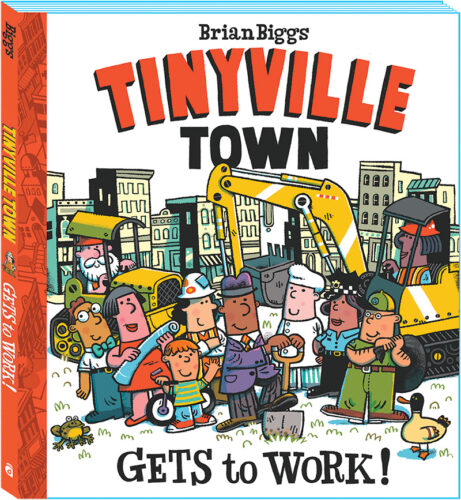 When I heard that Mr. Biggs had a new series coming out from Abrams called Tinyville Town, I was naturally curious. What’s interesting about the books and the series is that rather that conform to the usual Scarry model, the stories examine “the city” as a concept in and of itself. So we had a talk about it and the more he spoke about it, the more interesting it became. The end result is this interview. Bear in mind that this isn’t just about Brian’s work on the series. In the course of this interview he delves into some really interesting ideas about the influence of Italo Calvino, city planning, what Sesame Street did along these same lines, and what we mean when we say something is “timeless”. I urge you to pay particular attention to what he has to say about gender roles and picture books as well.
When I heard that Mr. Biggs had a new series coming out from Abrams called Tinyville Town, I was naturally curious. What’s interesting about the books and the series is that rather that conform to the usual Scarry model, the stories examine “the city” as a concept in and of itself. So we had a talk about it and the more he spoke about it, the more interesting it became. The end result is this interview. Bear in mind that this isn’t just about Brian’s work on the series. In the course of this interview he delves into some really interesting ideas about the influence of Italo Calvino, city planning, what Sesame Street did along these same lines, and what we mean when we say something is “timeless”. I urge you to pay particular attention to what he has to say about gender roles and picture books as well.
By the way, I usually do interviews where the interviewer (me) and the interviewee (in this case, Mr. Biggs) are represented solely by their initials. Today, for obvious reasons, that’s not going to work out.
Betsy Bird: I’m interested in how this series tackles the idea of “the city” as more than just one of those random places that people live. Historically, Americans mostly lived in the country. Now we mostly live in cities but books that convey how interconnected we all are to one another there aren’t all that common. So what was the impetus for starting this series in the first place? And what, if you’ll forgive me, makes it different from your average everyday Richard Scarry fare?
 Brian Biggs: To be honest, the argument could be made that the impetus for Tinyville Town came from a blog-entry you wrote about Everything Goes back in 2011. That series was definitely about vehicles, but I think you were on to something when you wrote that the first book, Everything Goes On Land, was really about my love for cities. Three years later, when I was playing with the idea of a series of little books about people and their jobs, it occurred to me that this, too, was potentially an excuse to draw another city and explore the streets and buildings within.
Brian Biggs: To be honest, the argument could be made that the impetus for Tinyville Town came from a blog-entry you wrote about Everything Goes back in 2011. That series was definitely about vehicles, but I think you were on to something when you wrote that the first book, Everything Goes On Land, was really about my love for cities. Three years later, when I was playing with the idea of a series of little books about people and their jobs, it occurred to me that this, too, was potentially an excuse to draw another city and explore the streets and buildings within.
I’d put it on the record that Italo Calvino is just as big an influence here as Richard Scarry, and that’s not something you can say for just any board-book for three-year-olds. I read Invisible Cities when I was living in Paris, in 1991, just after college, and the book adjusted the way I looked at these random places that people live, as you write. I could close one eye, and Paris was a chaotic mass of people moving about, with no order, no sense. I could look with the other eye, and it was a latticework of streets and alleys with recognizable patterns and clear intents of the designers. I could squint, and imagine the connections between people in my neighborhood, from the taxi drivers to the family that ran the Chinese restaurant below my building to the woman who operated the laundry across the street. I don’t want to get carried away here — Tinyville Town is not a philosophical prose poem on the nature of our existence. But when later that year I left Paris for the Fort Worth suburb of Euless, Texas, I was able to find these stories there as well. Euless and Paris are nothing alike, yet they are. People go to sleep there, and wake up there, and go to work there, and live their lives there.
 When I was a kid, I watched a lot of Sesame Street. Sesame Street did a great a job of finding connections and figuring out how to make a Brooklyn city block relevant to this kid watching tv in Little Rock. That neighborhood sure looked different from my neighborhood. But what I identified with were the people who lived there and their relationships to one another. Bob and Maria and Gordon, and even Oscar and Ernie and Big Bird, interacted with one another in ways that I did and my parents did with neighbors, and the guy at the grocery store, and the mailman. It wasn’t lost on me that, years later in Texas, what Euless and Paris had in common were those same people living vastly different yet very similar lives.
When I was a kid, I watched a lot of Sesame Street. Sesame Street did a great a job of finding connections and figuring out how to make a Brooklyn city block relevant to this kid watching tv in Little Rock. That neighborhood sure looked different from my neighborhood. But what I identified with were the people who lived there and their relationships to one another. Bob and Maria and Gordon, and even Oscar and Ernie and Big Bird, interacted with one another in ways that I did and my parents did with neighbors, and the guy at the grocery store, and the mailman. It wasn’t lost on me that, years later in Texas, what Euless and Paris had in common were those same people living vastly different yet very similar lives.
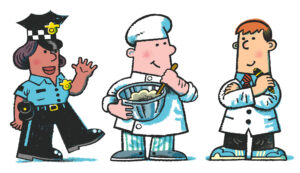 So, Sesame Street is a show that teaches numbers and the alphabet, and entertains kids so their parents can get the laundry done. But it’s much more than that, isn’t it? By hanging these lessons on this setting and with these people, Sesame Street teaches us so much more. Yes, Tinyville Town began as a simple series of little books about people with jobs. A day in the life of a fire fighter, and a veterinarian, and a librarian, doing the things that these people do. And while it might be difficult to explore the nature of existence and sociology in 24 pages, I’m hoping that these influences and these roots give me a stage that’s a little bigger than what might be immediately visible, and a setting in which I might be able to do a little more than count to ten.
So, Sesame Street is a show that teaches numbers and the alphabet, and entertains kids so their parents can get the laundry done. But it’s much more than that, isn’t it? By hanging these lessons on this setting and with these people, Sesame Street teaches us so much more. Yes, Tinyville Town began as a simple series of little books about people with jobs. A day in the life of a fire fighter, and a veterinarian, and a librarian, doing the things that these people do. And while it might be difficult to explore the nature of existence and sociology in 24 pages, I’m hoping that these influences and these roots give me a stage that’s a little bigger than what might be immediately visible, and a setting in which I might be able to do a little more than count to ten.
Betsy: You’ve done books that take broad concepts and then define them in simple terms that no one else has really thought of before. Your “Everything Goes” series, for example, was both broad and meticulous. Are you doing something similar here?
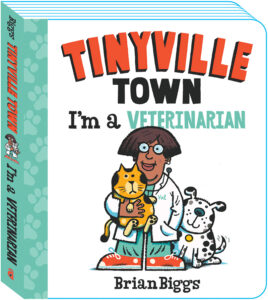 Brian: Oh, sure. At least, I hope so. The structure of the series is built on this very idea. The larger picture books in the series, “Tinyville Town Gets to Work” being the first, are about the town. How the people of Tinyville Town work together to get something done. These books are the “broad” you mention. The smaller board books are the “meticulous,” each telling the story of one citizen of Tinyville Town. Visually, Tinyville Town doesn’t fill the page the way that Everything Goes does. There aren’t the hidden details and birds with hats. The surprises reveal themselves more slowly and are more relevant to the stories of this town.
Brian: Oh, sure. At least, I hope so. The structure of the series is built on this very idea. The larger picture books in the series, “Tinyville Town Gets to Work” being the first, are about the town. How the people of Tinyville Town work together to get something done. These books are the “broad” you mention. The smaller board books are the “meticulous,” each telling the story of one citizen of Tinyville Town. Visually, Tinyville Town doesn’t fill the page the way that Everything Goes does. There aren’t the hidden details and birds with hats. The surprises reveal themselves more slowly and are more relevant to the stories of this town.
Betsy: I mentioned Scarry earlier, and I suspect that of all the classic children’s authors of the past he’s the one you get compared to the most. We’ve this feeling that he’s “timeless” in some way (though anyone who has ever eyeballed Ma Pig’s Jane Fonda-esque headband in Cars and Trucks and Things That Go would take issue with that statement). “Timeless” is a goal of a lot of authors. It’s a kind of key to perpetual publishing. Is that something you consciously think about when you make a series like this one or does it not concern you?
Brian: It does concern me, and I’ve had discussions with Traci, my editor, about ways to make Tinyville Town “timeless.” But I haven’t really worked out exactly what this means, or even whether it is a good idea or not.
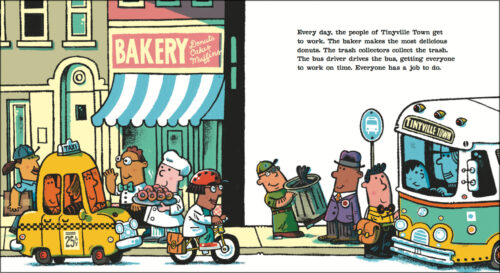 For example, one of the first things I decided about this series was that there are no mobile phones in Tinyville Town. When we see a group of people standing at a bus stop waiting for the bus, they were going to be reading books and newspapers, not staring like zombies at their smart phones. I can’t tell you how long it’s been since I saw someone waiting at a bus stop with a book, but there is just something about that scene that I could not bring myself to include. On the other hand, I think readers really like to see things like that they recognize. Early on, in the first Everything Goes book, I have a driver cutting through traffic, talking on his mobile phone. Kids often point this particular detail out. They know it’s something you’re not supposed to do, and they love it on the next page when we see the same driver pulled over by the police car, getting a ticket. Twenty years from now, will a reader know what the heck is going on there? Will we get pulled over in the future for talking to our robot helpers on our telepathic com-links while our automated flying Google cars get us from place to place? Will this scene render Everything Goes dated and dull?
For example, one of the first things I decided about this series was that there are no mobile phones in Tinyville Town. When we see a group of people standing at a bus stop waiting for the bus, they were going to be reading books and newspapers, not staring like zombies at their smart phones. I can’t tell you how long it’s been since I saw someone waiting at a bus stop with a book, but there is just something about that scene that I could not bring myself to include. On the other hand, I think readers really like to see things like that they recognize. Early on, in the first Everything Goes book, I have a driver cutting through traffic, talking on his mobile phone. Kids often point this particular detail out. They know it’s something you’re not supposed to do, and they love it on the next page when we see the same driver pulled over by the police car, getting a ticket. Twenty years from now, will a reader know what the heck is going on there? Will we get pulled over in the future for talking to our robot helpers on our telepathic com-links while our automated flying Google cars get us from place to place? Will this scene render Everything Goes dated and dull?
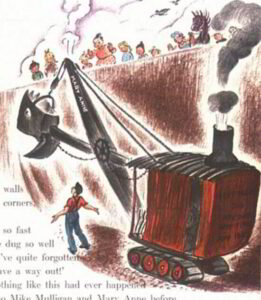 When I was researching firefighters for Tinyville Town, I learned that firehouses aren’t built with sliding poles any more, for insurance reasons. And the firehouses that do have them, don’t use them. But when you talk to kids about fire stations, a pole is still among the first things they want to see. I gotta have that pole, even though it’s an anachronism. So, what is it that makes a book “timeless,” anyway? Mike Mulligan and his Steam Shovel was one of my favorite books when I was a kid. I had no idea what a steam shovel was, and that book was big-time dated when I read it in the 1970s. But I loved it. It’s timeless. Not because a steam shovel was still a relevant piece of cool construction technology, but because the theme of “new and improved” versus familiar and reliable, and the David and Goliath story buried in that book will always be relevant.
When I was researching firefighters for Tinyville Town, I learned that firehouses aren’t built with sliding poles any more, for insurance reasons. And the firehouses that do have them, don’t use them. But when you talk to kids about fire stations, a pole is still among the first things they want to see. I gotta have that pole, even though it’s an anachronism. So, what is it that makes a book “timeless,” anyway? Mike Mulligan and his Steam Shovel was one of my favorite books when I was a kid. I had no idea what a steam shovel was, and that book was big-time dated when I read it in the 1970s. But I loved it. It’s timeless. Not because a steam shovel was still a relevant piece of cool construction technology, but because the theme of “new and improved” versus familiar and reliable, and the David and Goliath story buried in that book will always be relevant.
Betsy: So I did this post the other day about gender and how construction workers (and even their equipment) are shown to be both male and female or simply male. Some folks wrote in saying they’d never seen a female construction worker in all their livelong days. You, however, do give professions of every sort dual genders (I was always quite grateful for the female pilot in Everything Goes in the Air). How do you reconcile this with a real world that isn’t always as gender neutral as we’d like it to be?
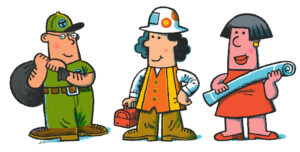 Brian: I’m going to quote a friend here, who told me that “even if it isn’t seen, that doesn’t mean it’s right and it doesn’t mean things should stay that way. If kids can see it, it’s easier for them to imagine being it.” This friend recently became one of the few female electrical linemen in Philadelphia. A while back, when she saw some early sketches I’d posted for I’m a Firefighter, she pointedly asked me why there were no women working at the Tinyville Town fire station. I couldn’t believe I’d let this get by me. And I was so so happy she’d pointed it out. But did I ask myself how many women really are firefighters? Do I need to go by all the fire stations in Philadelphia to see how many women work there before I can include them in my book?
Brian: I’m going to quote a friend here, who told me that “even if it isn’t seen, that doesn’t mean it’s right and it doesn’t mean things should stay that way. If kids can see it, it’s easier for them to imagine being it.” This friend recently became one of the few female electrical linemen in Philadelphia. A while back, when she saw some early sketches I’d posted for I’m a Firefighter, she pointedly asked me why there were no women working at the Tinyville Town fire station. I couldn’t believe I’d let this get by me. And I was so so happy she’d pointed it out. But did I ask myself how many women really are firefighters? Do I need to go by all the fire stations in Philadelphia to see how many women work there before I can include them in my book?
 This ties in directly with the discussion about timelessness, doesn’t it? Ten years ago there was this big brouhaha when someone noticed that the Busytown books he was reading to his kids were different from the ones he had when he was growing up. At some point the publisher had redrawn many of the characters and even some complete scenes to reflect a more modern sensibilty. A father bunny rabbit had joined a mother bunny rabbit in the kitchen preparing dinner. The “pretty stewardess’” job description had changed to “flight attendant” and the “pilot” was no longer “handsome.” The mouse in the canoe was no longer wearing the potentially offensive and stereotypical feathered headdress, and a menorah had been added onto the holiday celebration. These changes came along right around the time I was reading Scarry’s books to my own kids, and as a responsible parent, I was pleased. There was a part of me, the sentimental child within, that wondered if I should be angry at this absurd kowtowing to political correctness, but do I want my daughter thinking that flight attendants are supposed to be pretty? Do I want my son to think that husbands are supposed to be waited on by their wives? These books aren’t supposed to be snapshots of a particular time. They’re not Little House on the Prairie.
This ties in directly with the discussion about timelessness, doesn’t it? Ten years ago there was this big brouhaha when someone noticed that the Busytown books he was reading to his kids were different from the ones he had when he was growing up. At some point the publisher had redrawn many of the characters and even some complete scenes to reflect a more modern sensibilty. A father bunny rabbit had joined a mother bunny rabbit in the kitchen preparing dinner. The “pretty stewardess’” job description had changed to “flight attendant” and the “pilot” was no longer “handsome.” The mouse in the canoe was no longer wearing the potentially offensive and stereotypical feathered headdress, and a menorah had been added onto the holiday celebration. These changes came along right around the time I was reading Scarry’s books to my own kids, and as a responsible parent, I was pleased. There was a part of me, the sentimental child within, that wondered if I should be angry at this absurd kowtowing to political correctness, but do I want my daughter thinking that flight attendants are supposed to be pretty? Do I want my son to think that husbands are supposed to be waited on by their wives? These books aren’t supposed to be snapshots of a particular time. They’re not Little House on the Prairie.
 Before 2008, one could set a tv show in the near-but-still-far-away future by having a U.S. President be African American, or female. It was maybe somewhat conceivable, but it hadn’t happened yet. Now, there’s a fairly good chance we’re going to elect a female president this year, which would mean that in 2020 there will be a generation of kids who don’t know how impossible this so recently seemed. To these kids, those 43 previous white guys are mere history. That’s just amazing to me.
Before 2008, one could set a tv show in the near-but-still-far-away future by having a U.S. President be African American, or female. It was maybe somewhat conceivable, but it hadn’t happened yet. Now, there’s a fairly good chance we’re going to elect a female president this year, which would mean that in 2020 there will be a generation of kids who don’t know how impossible this so recently seemed. To these kids, those 43 previous white guys are mere history. That’s just amazing to me.
People have never seen a female construction worker? They’re not paying attention.
Betsy: What’s the ultimate goal with this series?
Brian: Well, of course, the ultimate goal is to create an entertaining, satisfying series of books that kids like to read over and over again. I actually don’t think much about teaching lessons when writing these things, and I don’t think that reflecting the world I live in, or I want my kids and eventual grandkids to live in, is any sort of political agenda, and certainly not a hidden one.
I don’t expect Tinyville Town to be some kind of a catalyst for change. Really, I just want a kid to read I’m a Firefighter, make loud siren noises as the fire truck speeds through town, and cheer when the fire at the bakery is put out at the end. If she then goes to bed thinking “I want to be that,” well, that’s just gravy, isn’t it?
I want to thank Brian for taking quite a bit of time to put down these thoughts for us today. Tinyville Town Gets to Work hits shelves September 6th alongside the board books Tinyville Town: I’m a Veterinarian and Tinyville Town: I’m a Firefighter. And yes, in case you were wondering, there is a librarian on the horizon as well:
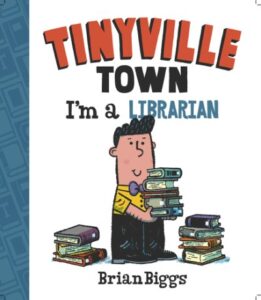

By:
Bianca Schulze,
on 7/22/2016
Blog:
The Children's Book Review
(
Login to Add to MyJacketFlap)
JacketFlap tags:
Non-Fiction,
Chapter Books,
Parenting,
Author Interviews,
featured,
Parenting Books,
Social Graces,
Guide Books,
Books About College,
Karen Levin Coburn,
Madge Lawrence Treeger,
Add a tag
The Children’s Book Review: Which five words best describe LETTING GO: A Parent’s Guide to Understanding the College Years?
Karen Levin Coburn: Reassuring, informative, warm, honest, insightful
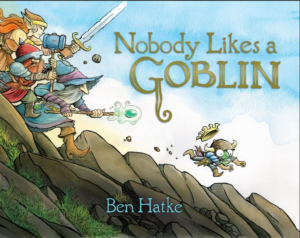 The problem is this: In a given year hundreds and hundreds and hundreds of children’s books are published. Of these, a percentage are really extraordinary. Of that percentage, a smidgen get reviewed on this site. Though I began my blogging career doing a review a day (because I WAS CRAAAAAAZY!!!), I’m lucky if I can get one out a week any more. That means that I end up not praising some truly fantastic fare (except possibly in my end of the year 100 Magnificent Books lists).
The problem is this: In a given year hundreds and hundreds and hundreds of children’s books are published. Of these, a percentage are really extraordinary. Of that percentage, a smidgen get reviewed on this site. Though I began my blogging career doing a review a day (because I WAS CRAAAAAAZY!!!), I’m lucky if I can get one out a week any more. That means that I end up not praising some truly fantastic fare (except possibly in my end of the year 100 Magnificent Books lists).
Now as a general rule I don’t really do interviews on this site, but once in a while I’ll make an exception. Interviews can be a nice way of highlighting some of those books I probably won’t review but really enjoyed. One of those books in 2016 was Nobody Likes a Goblin by Ben Hatke. A rousing, teasing play on high fantasy novels, condensed into a 40-page picture book, Ben Hatke takes one of the most loathed and abhorred creatures in all of literature and gives him his own day in the sun. Not literally. Goblins aren’t much for the sun. Here now, in a quick and easy interview, is Ben Hatke.
Betsy Bird: So goblins are pretty much the ultimate underdogs of the
fantasy world. I think it’s safe to say there aren’t any famous
goblins out there (always excepting the Goblin King from Labyrinth, of
course). As I recall, there were goblins in your previous picture
book JULIA’S HOUSE FOR LOST CREATURES (another story about magical
creatures finding their place in the world). Why the goblin love?
Ben Hatke: I think you answered that! Who doesn’t love an underdog? Especially a scraggly, scrappy, dirty little underdog?
I think maybe it’s Important to love goblins because the world is full of them. and we all have a little goblin in us.
BB: I’ve read this book multiple times to my 5-year-old
daughter and, naturally, she’s absolutely fascinated with the
reluctantly saved/kidnapped princess who is grumpily carried about
with the other treasures found by the adventurers. What’s her story?

BH: What IS her story?!? There’s a bust of a woman in the treasure room that has a green jewel. The same green jewel is on the woman’s dress. It’s the tiniest of clues that she was turned into a statue. But beyond that? Was she once Skeleton’s true love? We may never know…
BB: Any indication to do a sequel? Or, on a related note, do
you have any future fantasy-inspired picture books in that noggin of
yours?
BH: Oh boy. I’d like to visit Goblin again, but possibly in a different format. As for picture books -I love them. There will certainly be more.
BB: What’s next for you?
BH: Lots! The first of a two-volume graphic novel called Mighty Jack releases in September, with the second volume (which is finished) releasing in 2017.
I’m currently working on a middle grade novel that will be out sometime in 2018.
BB: Thanks, Ben! And thanks to the good people at First Second. As an end-of-the-interview treat (like having an extra bit after the credits roll) here is a hitherto unseen, rejected cover for this book. I like it quite a bit. There’s more than a smidgen of pathos at work here:
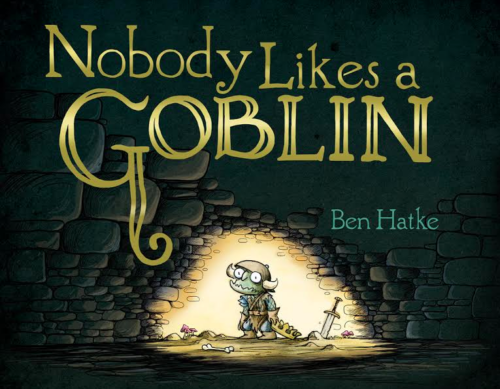


By: Samantha McGinnis,
on 5/31/2016
Blog:
First Book
(
Login to Add to MyJacketFlap)
JacketFlap tags:
Raymie Nightingale,
National Summer Reading Champion,
Authors & Illustrators,
author interviews,
Kate DiCamillo,
Beverly Cleary,
Because of Winn-Dixie,
CSLP,
Expert Voices,
Collaborative Summer Library Program,
imagination in books,
libraries,
Laura Ingalls Wilder,
summer reading,
The Tale of Despereaux,
Stuart Little,
summer library programs,
Add a tag

This summer, kids can access great books, go on adventures to faraway places and even win prizes – all at their local library.
Kate DiCamillo, author of Because of Winn-Dixie, The Tale of Despereaux and the recently released Raymie Nightingale, appreciates the importance of reading – especially during the summer.
As she visits schools throughout the country, answering questions about her new character Raymie and her journey to conquer remarkable things, she’s also letting kids know that all summer long their local libraries offer great opportunities for summer fun as the 2016 Collaborative Summer Library Program (CSLP) National Summer Reading Champion.
We had the opportunity to talk to Kate about what inspired her to become a children’s author, the importance of books and imagination and which books she loved to read during summer break as a kid.
Your books are very imaginative. Why is important for kids to explore their imagination through books?
Because you find that anything is possible – and the feeling of possibility gets into your heart. That’s what books did for me.
As a kid, I was sick all the time and spent so much time alone. It was super beneficial to read because I was convinced that the things I didn’t think were possible actually were! That’s incredibly important for kids in need, but also for all of us.
 Your stories are very relatable for children. Why is it important for kids to see parts their lives in the books they read?
Your stories are very relatable for children. Why is it important for kids to see parts their lives in the books they read?
I feel this as an adult reader too. Books give me an understanding not only of the world and other people’s hearts, but my own heart. When you see yourself in a story, it helps you understand yourself.
During my school visits, so many kids tell me stories of how they connect with my characters – Despereaux and Edward Tulane and Raymie. It’s so humbling to see that connection.
And when you see other people, it introduces you to a whole new world. I think of a story I read as a kid, which was actually just reissued, called All of a Kind Family. It’s about a Jewish family in turn-of-the-century New York. That couldn’t have been more foreign to me growing up in Central Florida but I loved every word of it.
Did you like to read during the summer as a kid?
Yes! I loved reading. I could spend all day reading. I’d go up into my tree house with books and sometimes didn’t come down until dusk.
If you gave me a book as a kid, I loved it. I read without discretion. But I did have my favorites I’d come back to again and again: Beverly Cleary’s books, Stuart Little and Laura Ingalls Wilder’s books.
It’s so crazy to stand in front of groups of kids and tell them this. There’s always a murmur of “oh, yeah, yeah! I read that!” That’s the staying power of books.
How can kids access books and learning activities over the summer?
That is the beautiful thing about CSLP summer reading programs at public libraries: it makes it easy for parents, caretakers and kids themselves to access all kinds of materials and activities for free. The 2016 summer reading theme is “On your mark, get set, READ!” and I think that’s an open invitation to readers of all ages to take advantage of everything their library offers.
Want more Kate DiCamillo? Listen to her talk about the fantastic summer fun you can find at your local library!
The post Author Kate DiCamillo Finds Summer Fun at The Local Library appeared first on First Book Blog.

Who? What? Where? When? Why?
It’s a blog tour, kiddos! A tour of bloggy goodness. More than that, it’s a graphic novel blog tour done to celebrate Children’s Book Week in all its fancypants glory.
The subject of today’s interview is none other than Eric Colossal. Colossal, if the name is new to you, is the author of the danged funny RUTABAGA series. I’m a big fan of those books as they combine two of my favorite things: quests and eating. And in a bit of a twist, I won’t be doing the interview here today, though. That honor goes to John Patrick Green, author of the upcoming HIPPOTAMISTER.
Take it away, John!
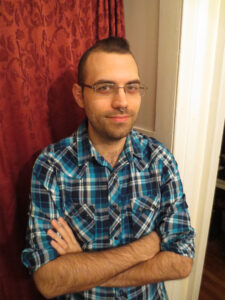 Your series is about a plucky adventurer who constantly finds himself in sticky situations that he manages to get out of by cooking delicious foods. How did this concept come about?
Your series is about a plucky adventurer who constantly finds himself in sticky situations that he manages to get out of by cooking delicious foods. How did this concept come about?
Growing up, I loved fantasy stories filled with weird beasts and mystical magic but I was always confused about why no one talked about the food in these lands. I mean, here in the real world we eat some pretty strange stuff. We eat bee barf and call it honey, we grind up a rock and put it on our food and call it salt. How come people who live in these magical lands never eat the strange beasts they fight in the bottoms of dungeons? So I created Rutabaga to do just that!
- At the back of each book are a few complete recipes that readers can cook. How do you come up with those? I’ll admit, even the fictional recipes Rutabaga makes on his quests look tasty! Where do you get the ideas for those?
There are two criteria I have for making a recipe to share: Does the recipe contain a fun activity and does the final product look unique. For instance, there’s nothing new about dipping grapes in chocolate but taking that idea and adding steps to the recipe that make the final product look like a chocolate spider with a big ol’ squishy butt, that’s a perfect recipe for Rutabaga! In fact, that recipe is in book 2 and it’s one of my favorites!
- What is your creative process like?
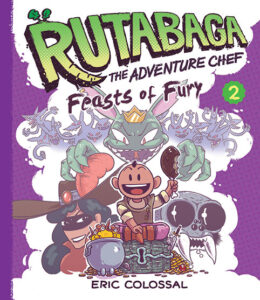 I watch a LOT of documentaries on food and food culture. My favorite ones talk about why people eat what they eat. Sure it’s fun to find out HOW to cook something but if you tell me WHY a culture has the diet it has you don’t just learn about food, you learn about people, and stories are about people. Other than that, most of my time is spent at my computer writing and drawing. I make the entire book digitally which is really handy when you have 2 cats who like to chew on paper!
I watch a LOT of documentaries on food and food culture. My favorite ones talk about why people eat what they eat. Sure it’s fun to find out HOW to cook something but if you tell me WHY a culture has the diet it has you don’t just learn about food, you learn about people, and stories are about people. Other than that, most of my time is spent at my computer writing and drawing. I make the entire book digitally which is really handy when you have 2 cats who like to chew on paper!
- Which do you love more: food or comics? Please explain your answer in a piechart. Or maybe just a pie.
It’s a tough choice but I’m going to have to say I love food more. A comic can take up to a year to write, draw, and color but you can cook a huge 3 course meal in about 2 hours. Imagine if it took a year to make breakfast! And just for fun here’s that pie chart you asked for:
- What else are you working on? Can we expect further adventures of Rutabaga and his trusty kettle, Pot? Maybe an entire cookbook?
I have so many Rutabaga stories to tell, you have no idea! I probably have enough material for at least another 8 books! As long as there are people who want to read about my goofy little chef and his metal pal, I’ll keep making them!
- What comics or children’s books are you currently reading?
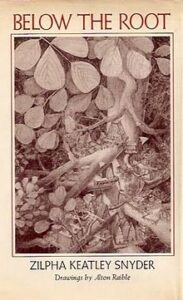 The last book I read was a young adult book called “Below The Root” by Zilpha Keatley Snyder. It’s an older book about a society of people who live in cities built on gigantic trees. They wear long flowing robes that allow them to glide around in the air to get from branch to branch. They’re an extremely peaceful race, they don’t eat meat, they don’t fight, they won’t even write on paper because it would hurt a tree to make the paper. The books follow a group of children as they uncover the history of their people and the sinister things that have been done in the name of protecting them. It’s a three book series and I greatly enjoyed it!
The last book I read was a young adult book called “Below The Root” by Zilpha Keatley Snyder. It’s an older book about a society of people who live in cities built on gigantic trees. They wear long flowing robes that allow them to glide around in the air to get from branch to branch. They’re an extremely peaceful race, they don’t eat meat, they don’t fight, they won’t even write on paper because it would hurt a tree to make the paper. The books follow a group of children as they uncover the history of their people and the sinister things that have been done in the name of protecting them. It’s a three book series and I greatly enjoyed it!
Thanks for the interview, guys! And what a fantastic book to end on. Honestly, it would have been even more awesome if you’d mentioned the Commodore 64 game of Below the Root that was based on the book (to the best of my knowledge, the ONLY children’s book to be adapted into the Commodore 64 gaming system format), but we’ll let it slide.
Want to read more of these interviews? Here’s the full blog tour:
Monday, May 2nd – Forever YA featuring Gene Luen Yang
Monday, May 2nd – Read Write Love featuring Lucas Turnbloom
Monday, May 2nd – Kid Lit Frenzy featuring Kory Merritt
Tuesday, May 3rd – Sharp Read featuring Ryan North
Tuesday, May 3rd – Teen Lit Rocks featuring MK Reed
Wednesday, May 4th – Love is Not a Triangle featuring Chris Schweizer
Wednesday, May 4th – SLJ Good Comics for Kids featuring Victoria Jamieson
Thursday, May 5th – The Book Wars featuring Judd Winick
Thursday, May 5th – SLJ Fuse #8 featuring Eric Colossal
Friday, May 6th – SLJ Scope Notes featuring Nathan Hale
Friday, May 6th – The Book Rat featuring Faith Erin Hicks
Saturday, May 7th – YA Bibliophile featuring Mike Maihack
Saturday, May 7th – Supernatural Snark featuring Sam Bosma
Sunday, May 8th – Charlotte’s Library featuring Maris Wicks
Sunday, May 8th – The Roarbots featuring Raina Telgemeier
Thanks to Gina Gagliano and the good folks at First Second for setting this up with me.

By:
Guest Posts,
on 4/20/2016
Blog:
The Children's Book Review
(
Login to Add to MyJacketFlap)
JacketFlap tags:
HarperCollins,
Magic,
Ages 9-12,
Chapter Books,
Author Interviews,
featured,
The Keepers,
Fantasy: Supernatural Fiction,
Ted Sanders,
Selfie and a Shelfie,
Add a tag
Check out Ted Sanders’ Selfie with The Keepers: The Harp and the Ravenvine, the second in the magical series that began with The Box and the Dragonfly.
By:
Guest Posts,
on 4/20/2016
Blog:
The Children's Book Review
(
Login to Add to MyJacketFlap)
JacketFlap tags:
Ages 4-8,
Picture Books,
Author Interviews,
featured,
Books for Girls,
Fathers,
Father's Day,
Flashlight Press,
Parenting Books,
Daddy Books,
Selfie and a Shelfie,
Jessica Warrick,
Josh Bledsoe,
Add a tag
Check out Josh Bledsoe’s Selfie with Hammer and Nails, the story of a little girl and her dad.
By:
Guest Posts,
on 4/18/2016
Blog:
The Children's Book Review
(
Login to Add to MyJacketFlap)
JacketFlap tags:
Ages 4-8,
Ages 9-12,
Historical Fiction,
Chapter Books,
Author Interviews,
Social Justice,
featured,
Books for Boys,
Immigrants,
Justice,
Animal Rights,
Deborah Hopkinson,
Homelessness & Poverty,
19th Century Books,
Books Set in New York,
Books with Pickpockets,
Street Musicians,
Add a tag
Deborah Hopkinson is the award-winning author of more than 45 books for young readers.
Today is is my honor and pleasure to have the amazingly talented, C.S. Wilde on the blog to share with other aspiring writers her writing and editing methods. Ms. Wilde's debut novel was published this week and you can you check it out HERE
I always like to start with a little background, where were you born?
Brazil, but because I’m a child of the world I was raised tri-lingual (English, German and Portuguese). Since I haven’t lived in Brazil for a while, my Portuguese is getting rusty and that sucks.
How old were you when you realized you wanted to be a writer?
Eight.
Do you have a specific writing style?
Fast-paced conversational style, balanced sentences.
What genre are you most comfortable writing?
Fantasy/Sci-fi with touches of Romance.
How long does it take you to write a book?
On average, three months to half-a-year.
Do you have a critique partner(s)?
Yup. Eight. I call them my Brady Bunch.
Do you ever use beta readers?
Sometimes, not always.
What did your voyage from unpublished writer to published author entail?
A lot of tears and chocolate.
What were the key highlights along the way to achieving your dream?
Getting to know other authors!
When did you write your first book and how old were you? Tell us about it.
I was eight and I wrote this book about two blue macaws (Rio totally ripped me off, man). Anyway, the macaws wanted to go to the moon, so they hid in a rocket, and the book ends with them dancing happily on the moon with the Earth as background. Most of that book was hand drawn, by the way.
What was one of the most startling things you learned during your experience as an indie author?
How much work goes into marketing and the techie stuff. It’s insane.
Do you have any helpful suggestions to help struggling writers become better novelists? If so, what are they?
Learn how to make a good product. Learn about book marketing. The rest is easy.
How much editing/revision did you have to do before you felt that your MS was ready to be self-published?
A lot. I think ACOA had some twelve rounds of edits before I was happy with it.
Five rules for writing fiction that you live by?
I don’t live by any writing rule, because all of them can be broken depending on context. Look at most bestsellers: nearly all of them break the rules. Being fundamentalist about writing rules will limit you a lot. So this is what I do:
1) Learn the rules
2) Follow the rules for a while
3) See how experienced authors broke them
4) Reverse engineer the process so you can break them, too. But don’t break them all at once. Remember: balance is key.
Tell us about your newest release. How was your story birthed?
Santana has always wondered if she’d go to Hell for defending rapists and murderers. Now she’ll know.
That’s ACOA (A Courtroom of Ashes). Oh and there’s a little romance with a hot ghost dude somewhere in there.
Fun fact: the inspiration for A Courtroom of Ashes was a lawyer joke.
What was your motivation for this story?
Glory, money, and bitches. But seriously, I just wanted to tell a story people would read and enjoy.
Who came up with your book title? Was it the original title or did it change along the way?
It was originally called In Death, but then a CP said, “Nah, this title is too meh.” And then we came up with “A Courtroom of Ashes”.
What's your secret to creating a realistic character(s)?
Messing them up whenever possible.
How do you come up with your character's names?
I like old names, actually. They have a way of coming back. I just saw one story with a Martha as main character and now it’s everywhere, even in Batman vs Superman. I can’t believe that Martha is in vogue again.
Which is more difficult to write: dialogue or action (or a love scene)?
Action, by far. Because you have to juggle pace, flow, and efficient descriptions all at once.
How do your family and/or friends feel about your book or writing venture in general?
They’re really supportive. My husband is my rock. But I only show my stuff to my mom and my best friend. I guess not a lot of people in my life have read my books. And I don’t want them to. Cause then they’ll be all like, “Oooh, you wrote me here” or “Ooooh, you’re so Santana” or “Ooooh, you’re so John” and I’m like “I’m all of them, people! I’m a freaking storyteller.”
Who is your favorite author and what really excites you about their work?
That’s a tough one, but I’ll say Susanna Clarke, because she wrote a novel about magicians in the eighteenth century, and I swear it was as if Jane Austen was narrating the whole thing and it was jaw dropping. Mrs. Clarke doesn’t need to write anything ever again, because Jonathan Strange and Mr. Norrel is her masterpiece and there’s no way she or anyone, ever, can top that book.
Other than writing, what are some of your interests, hobbies, or passions in life?
Skiing, yoga, and watching movies with mah boo.
What was the last amazing book you read? (What did you enjoy about it?)
Where is your favorite place to read? Do you have a cozy corner or special reading spot?
Nah, I can read anywhere.
Tell us a little about your next book.
James Bauman fell hard for his co-worker, Miriam Haworth. It was something that was just like boson particles or his father’s talent for baking apple strudels. But will he fight for her once he finds out she’s not from this world?
BOOK BLURB:
Santana Jones never thought she’d fall in love with a dead guy, but that was before she met John Braver, the incredibly charming and incredibly dead politician on the other side of her mirror.
When an evil spirit drags Santana’s soul across the mirror and into Purgatory, she’ll need all the help she can get to return to her body. With John by her side, nothing can go wrong. But Purgatory is a dangerous place for a lawyer with a pitch-black past. Santana has always wondered if she’d go to Hell for defending rapists and murderers.
Now she’ll know.
AUTHOR BIO:
C.S. Wilde is just another author, here to entertain you. She writes about fantastical worlds, love stories larger than life and epic battles. She also, quite obviously, sucks at writing an author bio. She finds it awkward that she must write this in the third person, and hopes you won’t notice.
Places you can visit her online:
By:
Bianca Schulze,
on 4/7/2016
Blog:
The Children's Book Review
(
Login to Add to MyJacketFlap)
JacketFlap tags:
featured,
Boyds Mills Press,
Geology,
Animal Books,
Nature Studies,
Environment & Ecology,
Speed Interview,
Daniel Levitin,
Donald Kroodsma,
Jeff Sayre,
Kenn Kaufman,
Kim Kaufman,
Liz Cunningham,
Ages 4-8,
Ages 9-12,
Science,
Chapter Books,
Author Interviews,
April Pulley Sayre,
Add a tag
Which five words best describe The Slowest Book Ever?
April Pulley Sayre: Chewy science for wondrous pondering.
By:
Bianca Schulze,
on 4/6/2016
Blog:
The Children's Book Review
(
Login to Add to MyJacketFlap)
JacketFlap tags:
Ages 4-8,
Katherine Paterson,
Ages 9-12,
Summer,
Chapter Books,
Cynthia Rylant,
Author Interviews,
Adoption,
featured,
Summer reading,
Books for Girls,
Kate DiCamillo,
Friendships,
Middle Grade Books,
Peter Catalanotto,
Summer Camp Stories,
Nancy J. Cavanaugh,
Sourcebooks Jabberwocky,
Add a tag
Just Like Me, by Nancy J. Cavanaugh, is a funny, uplifting summer camp story about unlikely friendships and finding your place in the world from the award-winning author of This Journal Belongs to Ratchet.
Welcome to Day #4 of the Of Better Blood Blog Tour!
To celebrate the release of Of Better Blood by Susan Moger (2/1/16), blogs across the web are featuring exclusive content from Susan and 5 chances to win a SIGNED copy of Of Better Blood, as well as a chance to win a 6-book YA Prize Pack in the Grand Prize Giveaway!
Writing Tips by Susan Moger
Getting Started… For me, cluster

By: lynne,
on 3/26/2016
Blog:
(
Login to Add to MyJacketFlap)
JacketFlap tags:
Children's Books,
Books,
Humour,
Fantasy,
Author Interviews,
Children's book,
Book Promotion,
Kindle,
Lynne North,
Be Careful What You Wish For,
Crimson Cloak Publishing,
Add a tag
Thanks very much for the great interview provided by Paula Roscoe on her blog. Why not go on over and check it out? Paula welcomes all authors to appear on her fascinating blog.
Guest Author Blog
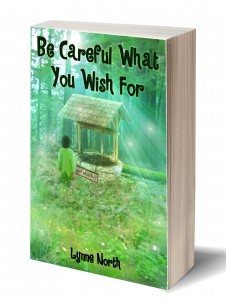
By:
Bianca Schulze,
on 3/21/2016
Blog:
The Children's Book Review
(
Login to Add to MyJacketFlap)
JacketFlap tags:
Ages 0-3,
Ages 4-8,
Picture Book,
Picture Books,
Author Interviews,
Author Interview,
Bedtime Stories,
featured,
Lauren Castillo,
Bedtime Books,
Jane Smiley,
Yawning,
Speed Interview,
Add a tag
Which five words best describe Twenty Yawns?
Jane Smiley: Cheerful, colorful, loving, amusing, relaxing.
By:
Guest Posts,
on 3/19/2016
Blog:
The Children's Book Review
(
Login to Add to MyJacketFlap)
JacketFlap tags:
Graphic Novels,
Comics,
First Second,
Illustrator Interviews,
Author Interviews,
featured,
Mark Siegel,
Gipi,
Jim Ottaviani,
Stan Sakai,
Leland Myrick,
Tony Cliff,
Teens: Young Adults,
Andy Hirsch,
Kyle Stark,
Patrick McEown,
Add a tag
To celebrate First Second Books and the rise of graphic novels, we thought it would be fun to have graphic novelist veteran, Leland Myrick, who has been with First Second from the beginning, and Andy Hirsch, a 2016 debut graphic novelist, interview each other.
By:
Bianca Schulze,
on 3/18/2016
Blog:
The Children's Book Review
(
Login to Add to MyJacketFlap)
JacketFlap tags:
Books for Girls,
Ages 4-8,
Ages 9-12,
Picture Books,
Art,
Author Interviews,
Historical Fiction,
Yuyi Morales,
France,
Laura Ingalls Wilder,
Paris,
Artists,
Author Interview,
Kevin Henkes,
featured,
Komako Sakai,
My Writing and Reading Life,
Alexandra S.D. Hinrichs,
Renée Graef,
Seventeenth Century Books,
Add a tag
Alexandra S. D. Hinrichs, author of Thérèse Makes a Tapestry, loves exploring new places, including France, where she once studied.
By:
Guest Posts,
on 3/9/2016
Blog:
The Children's Book Review
(
Login to Add to MyJacketFlap)
JacketFlap tags:
Orangutans,
Sterling Children's Books,
Social Graces,
Ages 4-8,
Picture Book,
Picture Books,
Humor,
Illustrator Interviews,
Author Interviews,
featured,
Primates,
Animal Books,
Tara Lazar,
S. Britt,
Add a tag
Picture book extraordinaire Tara Lazar and the frightfully creative S. Britt interview each other about Normal Norman (Sterling Children's Books, 2016), a laugh-out-loud book that explores the meaning of normal through the study of an exceptionally strange orangutan.

By:
Melissa Wiley,
on 3/8/2016
Blog:
Here in the Bonny Glen
(
Login to Add to MyJacketFlap)
JacketFlap tags:
podcast,
Homeschooling,
author interviews,
Fun Learning Stuff,
tidal learning,
Pam Barnhill,
Author stuff,
Tidal Homeschooling,
Ed Snapshots,
Add a tag
Pam Barnhill interviewed me about Tidal Learning for her Ed Snapshots podcast. We had a delightful conversation. Here’s the scoop:

Melissa Wiley is an author and a homeschool mom of 6 who blogs at Here in the Bonny Glen. Her novel, The Prairie Thief, is a big hit at my house, and I have a little Laura Ingalls fan who is just itching to check out her two series of books about Laura’s ancestors, The Martha Years and The Charlotte Years. On this episode of the podcast, Melissa gives us a little peek into her school days and explains her unique philosophy, which she calls Tidal Homeschooling. This interview is full of inspiration for how we can foster an atmosphere of learning, creativity, joy, and relationship-building in our homes by recognizing and working within our own natural rhythms or “tides.” Enjoy!
Click here to listen: HSP 24 Melissa Wiley: All About Tidal Homeschooling – Ed Snapshots
By:
Guest Posts,
on 2/19/2016
Blog:
The Children's Book Review
(
Login to Add to MyJacketFlap)
JacketFlap tags:
Ages 4-8,
Ages 9-12,
Giveaways,
Fairy Tales,
Chapter Books,
Author Interviews,
Fractured Fairy Tales,
Little Red Riding Hood,
featured,
Books for Girls,
Fantasy: Supernatural Fiction,
Liesl Shurtliff,
Selfie and a Shelfie,
Add a tag
Don’t miss Liesl Shurtliff’s new dark, humorous stand-alone middle grade novel RED: THE TRUE STORY OF RED RIDING HOOD (on sale April 12, 2016)!
By:
Bianca Schulze,
on 2/18/2016
Blog:
The Children's Book Review
(
Login to Add to MyJacketFlap)
JacketFlap tags:
Ages 9-12,
Dance,
Sports,
Ballet,
Non-Fiction,
Chapter Books,
Black History Month,
Author Interviews,
Adoption,
African American Authors,
Memoirs,
African American,
featured,
Dancing,
Orphans,
Books for Girls,
African American History Month,
Sheryl WuDunn,
Nicholas D. Kristof,
Teens: Young Adults,
Elaine DePrince,
Michaela DePrince,
Add a tag
The extraordinary memoir of Michaela DePrince, a young dancer who escaped war-torn Sierra Leone for the rarefied heights of American ballet.
The Mora Stone is a young adult novel for readers that enjoy the fantasy genre.
By:
Guest Posts,
on 2/10/2016
Blog:
The Children's Book Review
(
Login to Add to MyJacketFlap)
JacketFlap tags:
Nancy Paulsen Books,
My Writing and Reading Life,
Books Set in Alaska,
Books Set in Wisconsin,
Travel,
Ages 9-12,
Garth Williams,
Chapter Books,
Author Interviews,
Laura Ingalls Wilder,
featured,
Books for Girls,
Carole Estby Dagg,
Katherine Patterson,
Kate Morton,
Pioneer Books,
Add a tag
Sweet Home Alaska, by Carole Estby Dagg, is an exciting pioneering story, based on actual events, and introduces readers to a fascinating chapter in American history, when FDR set up a New Deal colony in Alaska to give loans and land to families struggling during the Great Depression.
View Next 25 Posts
 Last time I blogged it was related to dancing dinosaurs. And guess what? My post today is about dancing dinosaurs, too! Canadian author and dancer Judy Cook is here with me to answer some questions about her debut picture book When Dinosaurs Go Dancing, recently published by FriesenPress and a great blend of rhythm, rhyme, dance, and science!
Last time I blogged it was related to dancing dinosaurs. And guess what? My post today is about dancing dinosaurs, too! Canadian author and dancer Judy Cook is here with me to answer some questions about her debut picture book When Dinosaurs Go Dancing, recently published by FriesenPress and a great blend of rhythm, rhyme, dance, and science!






















 Your stories are very relatable for children. Why is it important for kids to see parts their lives in the books they read?
Your stories are very relatable for children. Why is it important for kids to see parts their lives in the books they read?

















The only problem I can see her mentioning with Nate is that he’s a white male solving a girl’s problem.
That must be it. Ah, the difficulties of a limited word count. And I’d agree if he just walked in and explained all her problems to her without her wanting him to but he’s a detective she specifically hired to solve a case. This seems less like mansplaining and more like commerce.
Maybe that he is a white male solving an African American girl’s problem?
Yep. I see that. But she hired him. I feel like that’s important. And for that matter, in 1972 how many white guys were solving black girls’ problems? Seems like they were causing the problems, not trying to solve anything. The reviewer calls this a “stereotype” so my question is how common a stereotype was it?
[I realize, by the way, that I’m arguing with a review that’s six years older than I am for a book that is so popular it’s still in print . . .]
I wonder if it’s more than just the white-guy-solves-black-girl’s-problems issue. I must admit I haven’t read Nate (or if I did, it was when I was wee)—how are Annie and brother Harry portrayed? Are they stereotyped in the illustrations, or in their speech, or … ?
Nope. The book could be published today and no one would blink an eye. I’m actually thinking of doing a post called The Weird Timelessness of Nate the Great. Most books from the past don’t age half as well as this one. Why?
(Not to mention Christian Robinson’s bra joke)
http://www.hbook.com/2016/08/authors-illustrators/interviews/five-questions-for-adam-rex-and-christian-robinson/
It seemed like it was as simple as he’s a white person solving a black person’s problem. I guess the stereotype of the white savior? Though, that’s usually when the problem is related to race, if I’m not mistaken.
Hence my confusion.